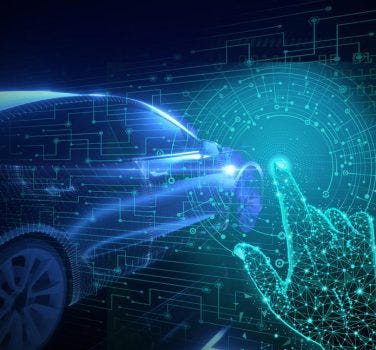A Journey Through Infotainment: Discovering the Array of Car Infotainment Systems
In today’s fast-paced technological landscape, the integration of infotainment systems has become a defining characteristic of contemporary automobiles. These multifaceted systems not only keep drivers and passengers entertained but also provide essential features such as navigation, communication, and connectivity. In this article, we embark on a journey to explore what is infotainment system and the diverse types of infotainment systems for cars, each tailored to distinct preferences and requirements.

- Built-in Infotainment Systems:
Built-in or embedded infotainment systems are seamlessly integrated into a vehicle’s hardware during manufacturing. They offer a unified and comprehensive user experience, encompassing features like GPS navigation, in-car audio, phone connectivity, and access to various applications. These systems are typically pre-installed by the automaker, providing a standardized user interface and often requiring periodic software updates.
2. Smartphone Integration Systems:
These systems mirror the driver’s smartphone interface onto the car’s touchscreen display.
3. Hybrid Infotainment Systems:
Hybrid infotainment systems combine the best of both worlds: embedded and smartphone integration features. They offer the convenience of inbuilt functionalities along with compatibility with popular smartphone platforms. This flexibility empowers drivers to choose between using the car’s native system or their preferred smartphone interface.
4. Aftermarket Infotainment Systems:
Aftermarket infotainment systems serve as retrofit solutions for older vehicles. These systems provide advanced infotainment features, including touchscreen displays, GPS navigation, and various connectivity options. They offer a cost-effective means of modernizing older cars and bringing them up to speed with contemporary technology.
5. Cloud-Based Infotainment Systems:
Cloud-based infotainment systems rely on an internet connection to deliver a wide range of services. They provide real-time information, live traffic updates, streaming music, and access to cloud-based applications. These systems leverage cloud computing to deliver up-to-date content and services directly to the vehicle.
6. Rear-Seat Entertainment Systems:
Designed primarily for passenger comfort, rear-seat entertainment systems are commonly found in family vehicles. They often feature screens integrated into the back of the front seats, allowing passengers to watch movies, play games, or connect their devices for entertainment during the journey.
7. Touchscreen vs. Button-Driven Systems:
Infotainment systems offer a choice between touchscreen interfaces and button-driven controls. Touchscreens provide intuitive and visually engaging interactions, while button-driven systems offer tactile feedback and may be preferred by some users for their familiarity and ease of use.
8. Voice-Activated Infotainment:
Voice-activated infotainment systems, powered by advanced natural language processing, enable drivers to control various functions through voice commands. This minimizes distractions, enhances safety, and simplifies interactions with the system.
In summary,
the world of infotainment systems for cars is diverse, offering an array of options to cater to varying driver preferences and needs. Whether one favors built-in systems, smartphone integration, hybrids, or aftermarket solutions, infotainment systems have evolved into an integral facet of the driving experience, amalgamating entertainment, connectivity, and practicality to enrich journeys and make them more enjoyable and convenient.

Comments
Post a Comment